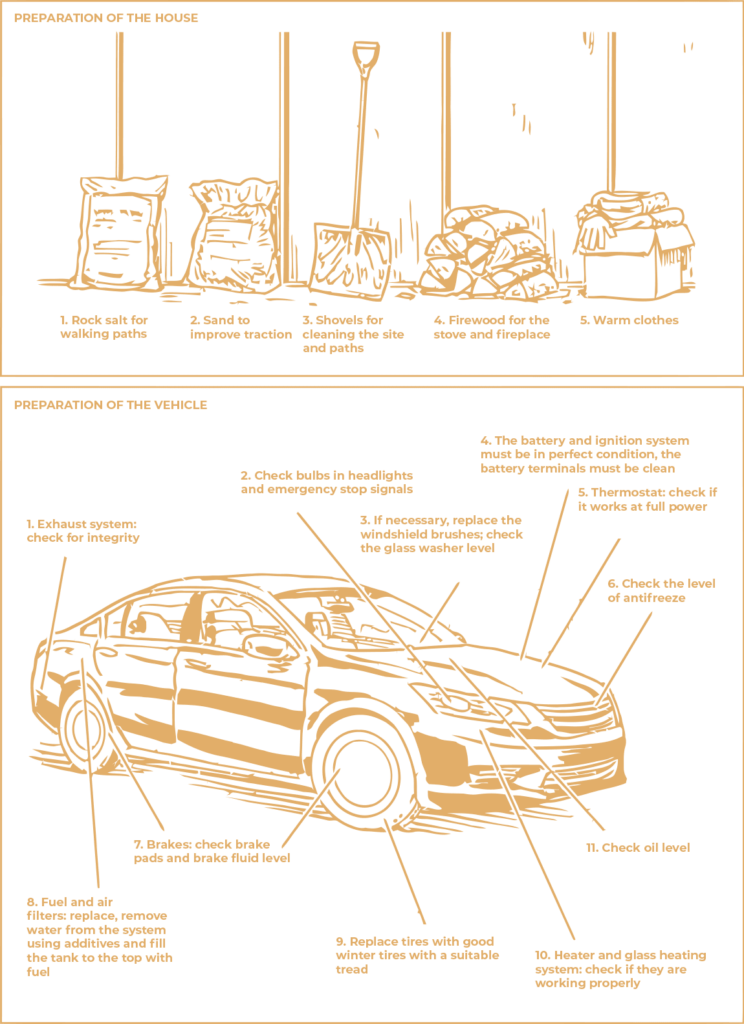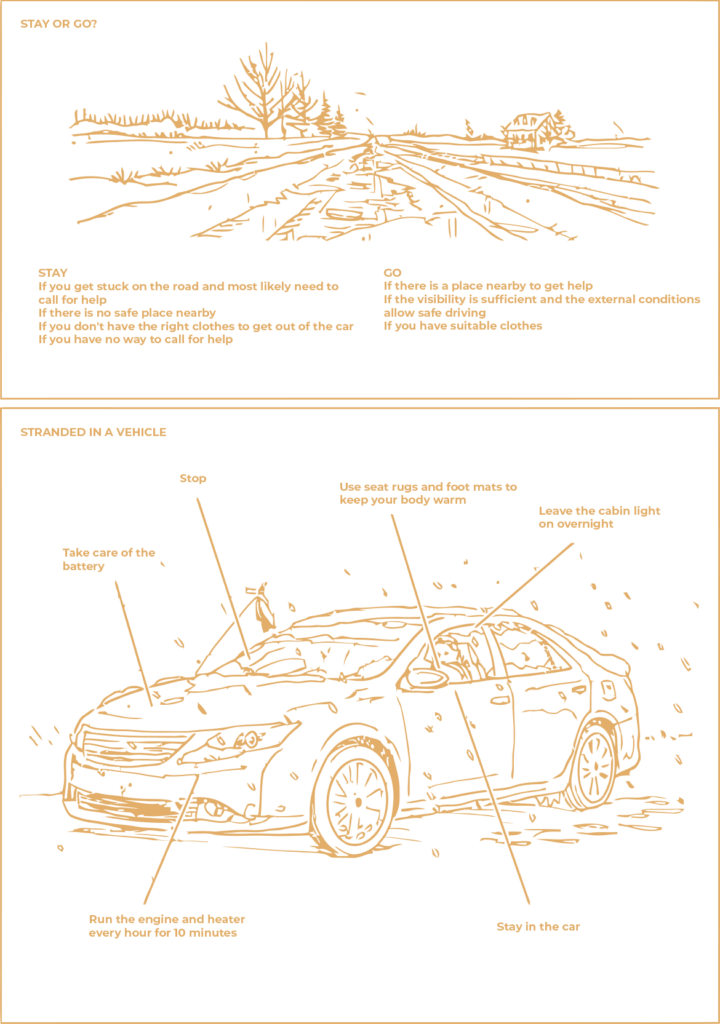SNOW STORM
Caught in a blizzard or witnessing the rarer winter thunderstorm with snow and thunder, which sometimes happens when a cold front collides with a rising mass of warm, humid air, you need to take the most common safety precautions. In regions where extreme weather conditions in winter are common, preliminary preparation is required.

Store rock salt, sand, firewood, shovels, and other tools in your area in your home and utility rooms. Place blankets, a woolen hat, and pocket heaters in the trunk of your car. Prepare your car for winter. Make sure your mechanic has the exhaust system checked. It is also necessary to replace the air filters, check the brake pads and the brake fluid level, antifreeze, the oil level, the operation of the heater, de-icer (thermostat), ignition system, battery and lighting devices, replace worn wipers and change tires to winter tires with a suitable tread.
Be reasonable
Use discretion when deciding whether to ride a blizzard so you don’t get stuck on the way and put yourself and your fellow travelers in danger.

Do not drive out if the roads are not already cleaned. If the weather doesn’t look good, don’t expect it to improve soon. By soberly analyzing all the conditions and circumstances of the upcoming trip, you can prevent the risk of death as a result of driving in poor visibility conditions. If the weather starts to deteriorate rapidly while you are already on your way, you don’t need to move on no matter what. In response to an emergency, people either retreat or seek to “break through” at any cost, which forces drivers to drive further into or ahead of the snowstorm. However, sometimes the best thing to do in such conditions is to pull over and wait it out.
When a storm catches you away from your home, do not try to move to a safe place if you are new to the area and if you do not have suitable clothing. In a severe blizzard, visibility is noticeably impaired and the likelihood of you getting lost and losing strength due to weather conditions increases. In such a situation, it is better to stay in the car.
To avoid carbon monoxide poisoning and to avoid draining the battery, run the engine and heater every hour for only 10 minutes.
If you don’t have enough warm clothing and / or blankets, cover yourself in seat and foot mats to keep warm.
At night, leave the lights on in the passenger compartment so that drivers of other cars can see you, but do not turn on the emergency stop signals, otherwise you will quickly drain the battery.
If you feel that you are beginning to show signs of hypothermia, use emergency pocket warmers to warm up your body. Be careful: if the body temperature drops too low, warming up the fingers and toes in the first place can cause increased blood flow to the heart, which can lead to cardiac arrest.






